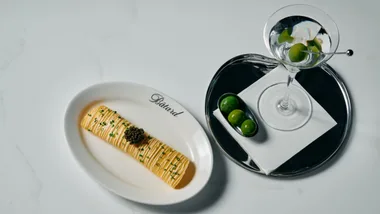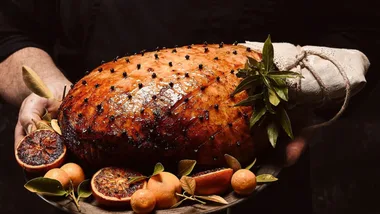Once in a while a book appears that becomes an indispensable kitchen companion for cooks the world over. With Salt, Fat, Acid, Heat: Mastering the Elements of Good Cooking, Samin Nosrat may have just written the latest.
By distilling nearly 20 years’ experience in cooking, tasting and teaching into four simple principles, she has produced a volume that not only implores you to have faith in your own senses, but improves them, honing the skills that are applicable to cooking well. It’s a riposte to so many recipe-driven cookbooks that might look pretty and show you how to make a couple of things, but don’t actually make you a better cook.
“We all already know what tastes good,” Nosrat says. “So if you can take a step back and say ‘oh, this doesn’t taste good – how do I make it taste good?’ That’s the question you’re trying to answer.” For her, that usually means asking whether a dish has enough salt, enough fat, enough acid, and whether she added them at the right time. Answer these, she says, and it’s basically all you need to get to delicious food most of the time. “Those questions can be answered by trusting your senses, by listening and looking and touching and tasting, and also by using your common sense.”

The flow charts, graphs and step-by-step drawings that accompany the text are at once informative and engaging.
Sense and the senses inform Nosrat more than anything, reflecting the schooling of a wide-eyed kid who swooned over the food at Chez Panisse in Berkeley, begged Alice Waters for a job, and went from vacuuming the dining room to working in the kitchen. It was there she learned to cook and to taste, to fry anchovies and fold ravioli, to heat oil to just the right temperature, and experiment with making mozzarella from scratch. She even had the chance to undertake a “grand cooking exchange” in Cuba with then-colleague Danielle Alvarez, now chef at Fred’s in Sydney.
It’s largely down to Nosrat’s years at Chez Panisse that her book focuses on flavour first, but Salt, Fat, Acid, Heat doesn’t just tell you that salt makes things taste good. It tells you when to add salt, how much to add, and how to add it, right down to illustrations of the wrist flick. It’s not about butter making things better; it’s about when to use cold, soft or melted butter, and, more importantly, why. It details how salt penetrates meat and vegetables, how butter of the right sotfness readily coats flour to give cakes or biscuits unrivalled crumble.
“I was always frustrated by the fact that a book of recipes could purport to teach you how to cook,” she says. “My goal wasn’t to say ‘these are my favourite things to cook’; my goal was to say ‘this is how to cook, this is how to make your food better, this is how to read a recipe and understand that it’s not the be-all and end-all.'”
Nosrat’s recipes, then, be they for buttermilk-marinated roast chicken or apple and frangipane tart, are demonstrative rather than prescriptive, and confined to the back half of the book.

Sources of fat separated into pure fats and fatty ingredients.
Salt, Fat, Acid, Heat also doesn’t look like other cookbooks. Instead of using a photographer, Nosrat worked with illustrator Wendy MacNaughton on playful flow-charts, graphs and step-bystep drawings that are as informative as they are engaging. They punctuate and complement the text – one page might fold out into a vibrant colour wheel of the flavours of the world, the next might take you through an illustrated step-by-step for Caesar salad with mayonnaise that seems to drip off the page. One particular highlight is a pie chart allocating importance to each of the senses; common sense takes up half the pie.
“I come from a school of cooking where we make really simple food – we boil broccoli and pour good olive oil over it,” Nosrat says. “But it’s not just broccoli and olive oil; it’s that I put the right amount of salt in the water, that I used really nice oil, that I didn’t overcook it – so there’s a little bit more. But if you can understand those things, and how to make those choices, you’re able to do a better job. It doesn’t have to be complicated.”










